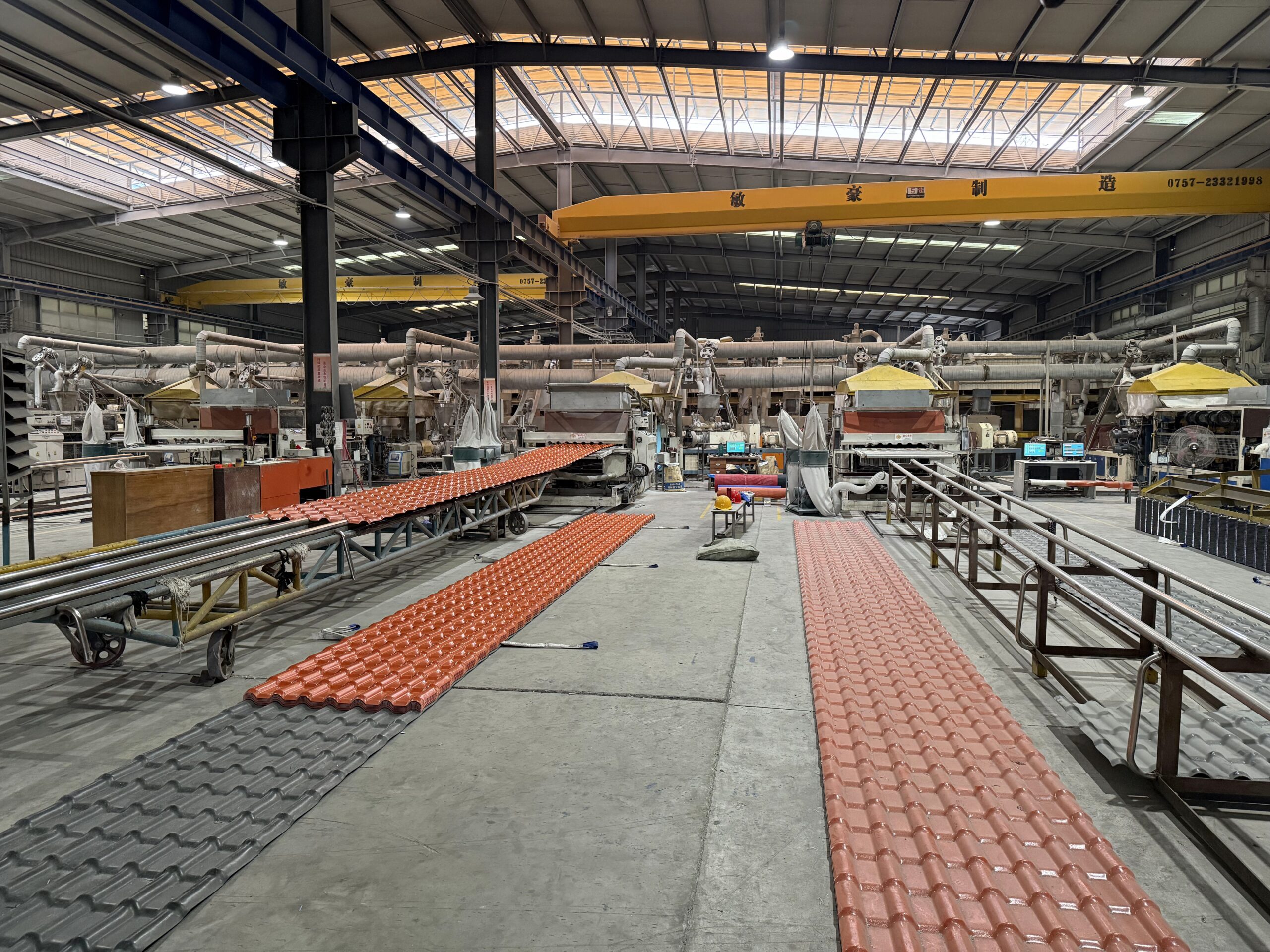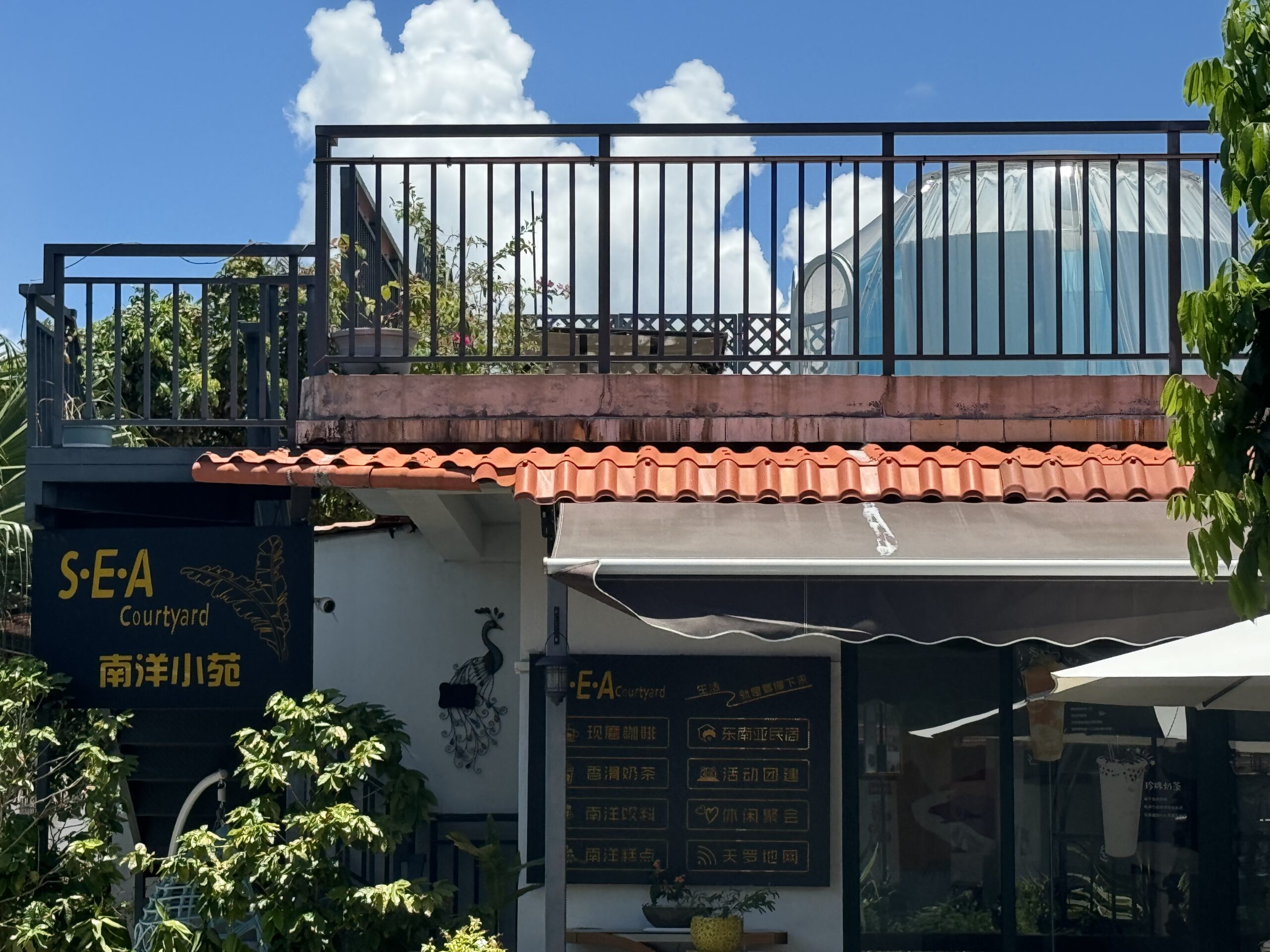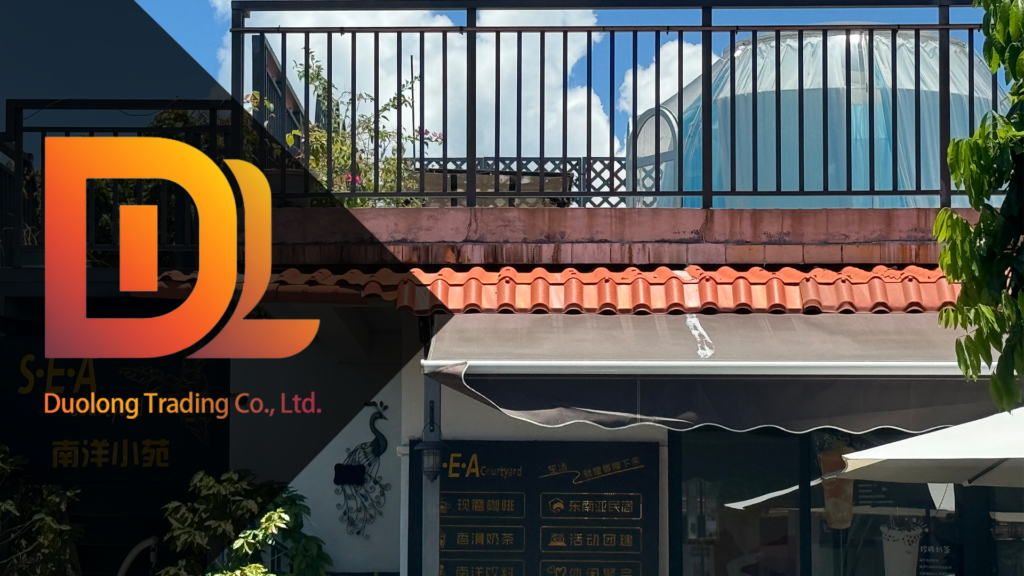In today’s construction industry, sustainability is no longer just a trend but a fundamental requirement for large-scale projects. Developers, contractors, and wholesalers are under increasing pressure to choose materials that reduce environmental impact while maintaining durability and cost-effectiveness. Traditional roofing materials such as clay tiles, asphalt shingles, and metal sheets often require high energy consumption during production and generate significant waste at the end of their lifecycle.
ASA roofing tiles, made from Acrylonitrile-Styrene-Acrylate, have emerged as a modern solution that meets both environmental and performance demands. With their long lifespan, energy-saving properties, and recyclability, ASA tiles are rapidly becoming a preferred choice in Southeast Asia, the Middle East, and Africa, where sustainable construction is a growing priority.
ASA Roofing Tiles: Eco-Friendly Properties and Sustainability
One of the core strengths of ASA roofing tiles lies in their unique composition and environmentally conscious design. Unlike traditional clay tiles or asphalt shingles, ASA tiles are manufactured through advanced extrusion processes that require significantly less energy. The raw materials, Acrylonitrile-Styrene-Acrylate polymers, are engineered to be highly durable and resistant to UV degradation, which extends the lifespan of the product to over 20–30 years in most climates. This longevity translates into fewer replacements and reduced construction waste, a critical factor for large projects aiming to achieve sustainability certifications such as LEED or BREEAM.
Another key environmental benefit of ASA tiles is their energy-saving performance. The reflective surface of ASA roofing helps reduce heat absorption, keeping indoor temperatures lower during hot seasons. This contributes to reduced reliance on air-conditioning systems, lowering overall energy consumption and carbon emissions. For tropical and coastal regions, where extreme sunlight and humidity accelerate material aging, ASA tiles offer a stable, low-maintenance solution that directly supports energy efficiency in buildings.
In addition, ASA tiles are fully recyclable at the end of their life cycle. Unlike ceramic or concrete tiles, which often end up in landfills, ASA roofing materials can be reprocessed into new building products, minimizing environmental footprint. This circular economy advantage is particularly appealing for governments and developers promoting green construction policies in Southeast Asia, the Middle East, and Africa.
For wholesalers and contractors, the sustainability of ASA tiles is not just about reducing environmental impact—it also adds value when bidding for projects. Increasingly, clients and investors favor suppliers who can demonstrate eco-friendly credentials. By offering ASA roofing, distributors can position themselves as leaders in the transition toward sustainable construction, improving their competitive edge in a rapidly changing market.

Energy-Saving and Carbon Reduction Impact of ASA Roofing Tiles
In modern construction, energy efficiency has become a decisive factor not only for environmental reasons but also for long-term cost savings. ASA roofing tiles stand out as a material that directly contributes to lowering building energy consumption, especially in regions where cooling loads account for the majority of electricity use.
The high solar reflectance index (SRI) of ASA tiles minimizes heat absorption on roof surfaces. By reducing surface temperature by up to 10–15°C compared to conventional clay or asphalt roofs, ASA roofs naturally lower indoor temperatures. For large housing projects, schools, warehouses, and industrial facilities, this translates into a 15–20% reduction in air-conditioning demand. For developers and property owners, these savings accumulate over decades, significantly lowering operational costs and improving ROI.
From an environmental perspective, reduced reliance on cooling systems directly cuts carbon emissions. For example, in tropical regions where air-conditioning accounts for over 40% of household electricity consumption, adopting ASA roofing could reduce annual CO₂ emissions per household by several hundred kilograms. When applied across thousands of units in a housing development, the carbon footprint reduction is comparable to planting thousands of trees annually.
Additionally, ASA roofing tiles maintain their reflective performance over time, unlike painted metal sheets that often fade and lose reflectivity after a few years. This long-term stability ensures consistent energy savings throughout the lifecycle of the roof. Such durability strengthens the case for ASA roofing in government projects, public housing, and corporate buildings seeking green building certifications.
For distributors and contractors, highlighting this carbon reduction benefit adds a strong selling point when pitching to eco-conscious clients or when responding to procurement requirements that increasingly include sustainability criteria. In markets like Southeast Asia and Africa, where electricity costs are rising and governments are promoting energy-efficient construction, ASA tiles provide both a commercial and an environmental advantage.

Waste Reduction and Recyclability Value of ASA Roofing Tiles
In large-scale construction projects, material waste is not only an environmental burden but also a financial drain. Traditional roofing options like clay tiles or concrete slabs often generate high levels of breakage during transport and installation, sometimes reaching up to 10–15% loss. ASA roofing tiles, on the other hand, are engineered for durability and flexibility, which drastically reduces wastage across the supply chain. Their lightweight structure minimizes transport damage, and their impact resistance ensures fewer breakages during on-site handling. For contractors managing tight budgets, this reduction in waste translates directly into cost savings.
Beyond reducing construction waste, ASA roofing tiles are also designed with recyclability in mind. Unlike traditional clay or cement tiles that typically end up in landfills after their service life, ASA tiles can be reprocessed and reused in secondary manufacturing. This closed-loop potential aligns with the global shift toward circular economy models in construction, where materials are not discarded but reintegrated into production cycles.
For developers working on government-funded or environmentally certified projects, the recyclability factor is becoming a crucial differentiator. Many green building rating systems, such as LEED and BREEAM, award credits for materials that can be recycled or reused. ASA tiles help projects meet these criteria, giving developers and contractors an edge in winning bids for eco-conscious construction.
From a branding perspective, distributors and wholesalers can leverage this recyclability advantage to appeal to clients who value long-term sustainability. In regions like Southeast Asia and Africa, where landfill capacity is increasingly strained and waste management costs are rising, offering a product that minimizes waste both during installation and after its lifecycle is a powerful market advantage. By reducing both upfront waste and end-of-life disposal, ASA roofing tiles prove themselves to be a forward-looking, sustainable choice.
Case Studies: Eco-Friendly Projects Powered by ASA Roofing Tiles
The environmental and economic benefits of ASA roofing tiles are not just theoretical—they have been proven in real-world projects across different regions. Several case studies highlight how developers, contractors, and distributors have leveraged ASA tiles to achieve both sustainability goals and financial performance.
In Southeast Asia, a residential housing project in Vietnam replaced traditional clay tiles with ASA roofing to comply with government-led green construction initiatives. The switch reduced material breakage by 12%, cutting procurement costs, while simultaneously lowering indoor temperatures by an average of 7–10°C. This helped homeowners save up to 18% on annual cooling costs, making the community more attractive to environmentally conscious buyers. The developer, in turn, gained recognition for delivering a sustainable and affordable housing model, winning additional government-supported contracts.
In the Middle East, where extreme heat creates high energy demand, an industrial warehouse project adopted ASA roofing tiles for their superior solar reflectance. The facility reported a 20% drop in energy bills within the first year of operation. More importantly, the project earned local sustainability certification, which was a key requirement for operating permits in the region. For the contractor, ASA tiles became a differentiator when bidding for future government and corporate projects.
In Africa, ASA roofing tiles were introduced in a school construction project in Kenya. The lightweight nature of the tiles significantly reduced logistical challenges in transporting materials to remote areas. Once installed, the roofs provided durable, leak-resistant protection against heavy rainfall while maintaining cooler classrooms for students. This project not only minimized maintenance costs but also aligned with international NGOs’ sustainability funding requirements, enabling the contractor to secure financial support.
These case studies demonstrate that ASA roofing tiles are more than just a roofing solution—they are a strategic investment for stakeholders seeking to balance cost efficiency, environmental responsibility, and long-term performance. Whether in residential, industrial, or public sector projects, ASA tiles consistently deliver tangible results, positioning them as a preferred choice in regions where sustainable construction is not just encouraged but increasingly mandated.

Future Trends and Market Opportunities for ASA Roofing Tiles
As sustainability shifts from being a market preference to a regulatory requirement, the demand for eco-friendly roofing materials like ASA tiles is projected to grow at an accelerated pace. Global construction is entering an era where compliance with green standards is no longer optional. Developers and contractors who anticipate these shifts will be better positioned to secure long-term contracts and access government-backed incentives.
One major driver is the tightening of environmental regulations in emerging markets. Southeast Asian governments, for instance, are rolling out stricter building codes requiring the use of energy-efficient and recyclable materials. This policy direction aligns perfectly with the strengths of ASA roofing tiles. Wholesalers and distributors who prepare early by stocking certified ASA products can capture demand surges as new regulations take effect.
Another critical trend is the increasing role of ESG (Environmental, Social, and Governance) standards in investment decisions. International investors are prioritizing projects that demonstrate low carbon footprints and material sustainability. Contractors using ASA tiles are more likely to attract funding or partnerships from global development banks, NGOs, and private investors who view sustainable infrastructure as both a financial and ethical imperative.
Urbanization also presents a powerful growth opportunity. Africa, for example, is expected to experience the world’s fastest urban population increase over the next two decades. With millions of new housing units, schools, and commercial buildings required, the roofing market will expand substantially. By offering durability, recyclability, and heat-resistance, ASA tiles align perfectly with the continent’s dual need for affordability and climate adaptability.
In the Middle East, rapid development of smart cities and mega-projects such as NEOM in Saudi Arabia is creating a surge in demand for sustainable construction materials. ASA tiles, with their ability to reduce cooling loads and meet certification requirements, are an attractive option for contractors bidding on these high-profile projects.
For suppliers and wholesalers, the opportunity lies not just in selling a product but in positioning ASA tiles as part of a broader sustainability narrative. By aligning with global climate goals and regional policies, businesses can strengthen brand reputation, differentiate themselves from competitors, and secure customer loyalty in markets that are increasingly shaped by environmental performance.
Partnering for Sustainable Growth in Construction
The shift toward sustainable construction is no longer a distant concept—it is happening now, and roofing materials are at the forefront of this transformation. ASA roofing tiles have proven to be more than just an alternative to traditional options; they are a reliable, future-ready solution that aligns with global green building standards while offering tangible cost savings and performance benefits.
For wholesalers, ASA tiles present an opportunity to expand product portfolios with a material that is already in rising demand due to regulatory changes and consumer preferences. Contractors and developers, on the other hand, can gain a competitive edge in tenders and projects by demonstrating compliance with energy efficiency and sustainability requirements. By adopting ASA tiles, they not only deliver higher value to clients but also strengthen their reputation in markets that increasingly reward eco-friendly solutions.
Now is the time to act. Whether you are a distributor seeking reliable suppliers, a contractor planning your next large-scale project, or a developer looking to align with ESG standards, ASA roofing tiles are a proven choice that delivers results across different regions and climates.
Duolong stands ready to support partners worldwide with high-quality ASA roofing tiles, professional consultation, and flexible logistics solutions. By collaborating with us, you gain not just a product, but a trusted partner committed to helping you succeed in the fast-evolving global construction market.
Take the next step today—reach out to our team to explore how ASA roofing tiles can elevate your projects, reduce costs, and meet sustainability goals. The future of roofing is already here, and ASA tiles are leading the way.


